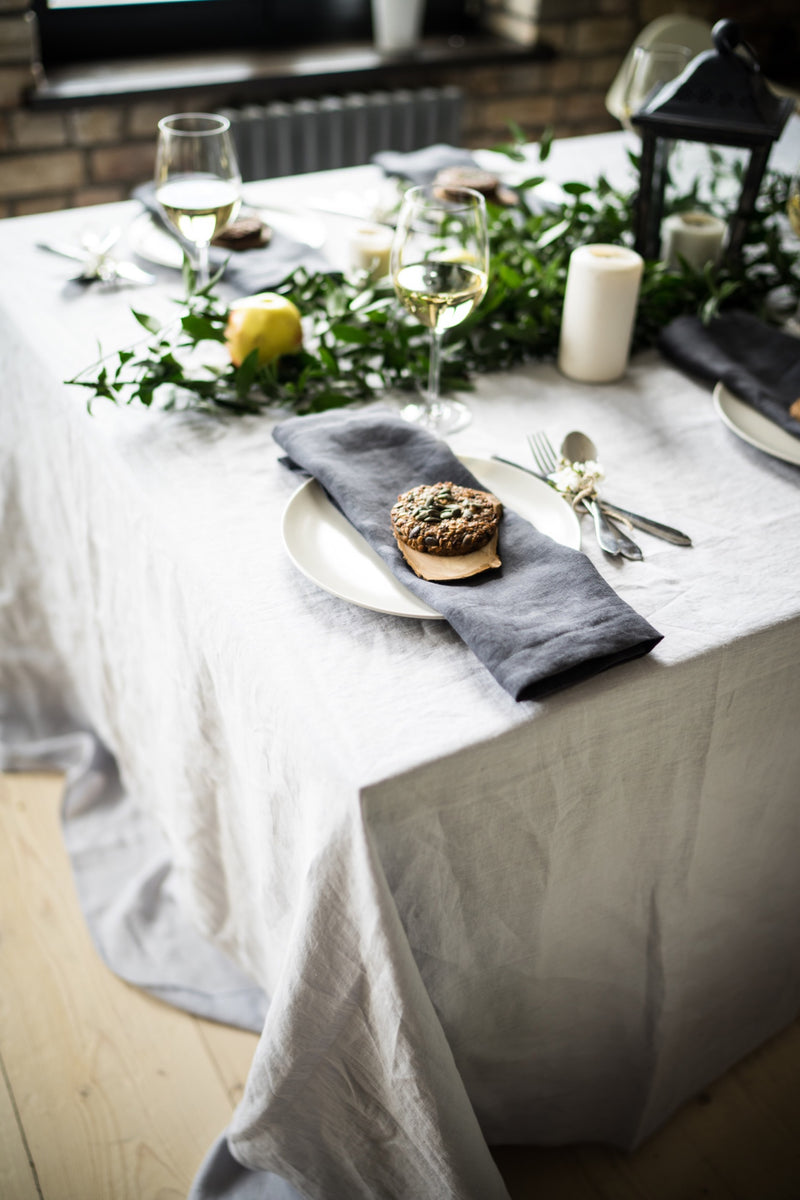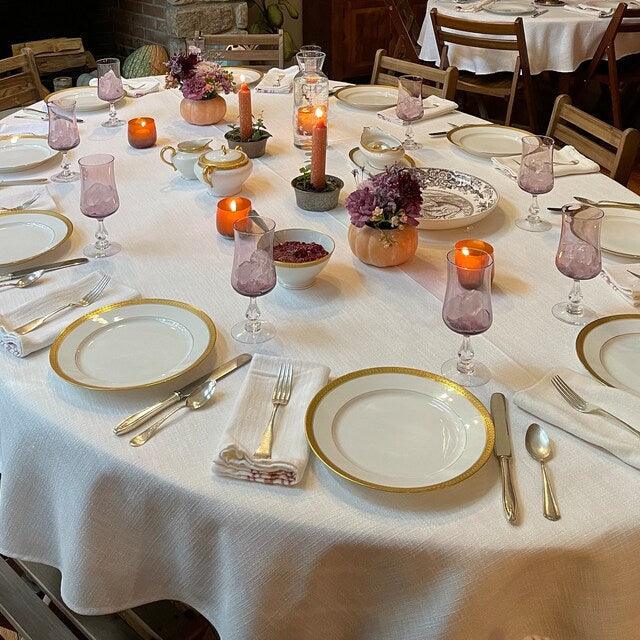Linen Fabric Developments: Checking Out Modern Trends and Creative Applications in Style and Fabric Sector
From sustainable production approaches to sophisticated weaving innovations, the development of linen is improving the landscape of the textile industry. As we dive into the realms of imaginative style applications and the emergence of linen blends and crossbreed materials, a new phase unfolds in which bed linen's function in future textile technologies takes center phase.
Lasting Practices in Linen Manufacturing
Sustainable practices in bed linen manufacturing have ended up being progressively crucial in the fabric market's efforts to minimize ecological influence and advertise ethical sourcing approaches. Linen, an all-natural fiber stemmed from the flax plant, supplies a range of advantages such as durability, biodegradability, and breathability. Nonetheless, conventional approaches of linen production can include significant water usage, chemical usage, and energy-intensive processes.
To attend to these challenges, numerous fabric suppliers are embracing lasting practices throughout the linen manufacturing procedure. This consists of sourcing flax from organic farms that prevent harmful pesticides and chemicals, applying water-efficient retting techniques to extract fibers from the flax stalks, and using eco-friendly dyes and finishes. Furthermore, some firms are purchasing eco-friendly energy sources to power their production facilities and minimizing waste via recycling and upcycling initiatives.
Technological Developments in Bed Linen Weaving
With the growing emphasis on sustainable methods in bed linen manufacturing, the fabric sector is currently experiencing a rise in technical advancements specifically aimed at transforming the art of linen weaving. These developments are reshaping the way linen materials are created, providing boosted effectiveness, high quality, and imagination in weaving methods.
One of the key technological developments in linen weaving is the assimilation of electronic looms. These advanced looms are outfitted with software program that permits intricate and complex layouts to be woven with accuracy. By digitizing the weaving process, manufacturers can achieve higher consistency and accuracy in their bed linen materials.
Moreover, developments in yarn spinning modern technology have actually allowed the manufacturing of finer and more resilient bed linen threads - table cloths. This results in softer and smoother bed linen materials that keep their top quality even after several usages and washes
Additionally, the growth of eco-friendly dyeing procedures and surfaces for bed linen fabrics is gaining traction. These lasting methods not only minimize the environmental influence however likewise provide to the boosting customer demand for morally produced fabrics.
Creative Style Applications for Bed Linen
Innovative creative techniques are increasingly shaping the innovative layout applications for bed linen in the fabric industry. Bed linen's natural aesthetic charm and capacity to mix with various other textiles make it a favorite choice for developing distinct garments and devices that provide to the eco aware customer.
Moreover, designers are explore linen in home design, using its sturdy and breathable nature to craft trendy home furnishings such as drapes, bed linen, and furniture. The structure and drape of bed linen bring a feeling of class and convenience to indoor spaces, including a touch of sophistication to modern-day homes.

Bed Linen Blends and Hybrid Fabrics

Crossbreed textiles, on the various other hand, take the concept of blending a step better by including extra components such as metallic threads, recycled materials, or conductive fibers. These cutting-edge fabrics not only broaden the design possibilities yet likewise introduce functional facets like conductivity, antimicrobial residential properties, or improved resilience. Crossbreed textiles are progressively being utilized in various markets, consisting blog here of fashion, interior decoration, and technical fabrics, where the need for multifunctional materials is on the rise.
Bed linen's Role in Future Textile Innovations

In the realm of future textile innovations, bed linen is anticipated to over here be a crucial player in the development of advanced functional materials. Scientists and designers are exploring methods to enhance bed linen's fundamental top qualities through technological innovations, such as incorporating smart fabrics, nanotechnology, and efficiency coatings. These innovations intend to boost linen's performance attributes, making it ideal for a broader array of applications, from activewear to safety clothing.
Additionally, the mix of bed linen with other natural or synthetic fibers opens unlimited possibilities for creating unique fabrics with distinct properties and capabilities. By leveraging bed linen's attributes and checking out ingenious blends, the textile industry is positioned to introduce exciting advancements that accommodate advancing consumer requirements and sustainability requirements.
Verdict
In conclusion, the expedition of lasting practices, technical improvements, innovative layout applications, bed linen blends, and its duty in future textile technologies highlight the constant advancement of bed linen fabric in the modern-day design and fabric sector. With a focus on development and imagination, the convenience and environmentally friendly nature of linen make it a useful product for designers and makers alike, leading the means for more advancements and improvements in the area of fabrics.
As we dive right into the worlds of imaginative layout applications and the appearance of linen blends and crossbreed materials, a brand-new chapter unfolds in which linen's role in future fabric innovations takes center phase.
Discovering the blend of linen with other fabrics has actually led to the appearance of innovative blends and crossbreed fabrics in the modern textile sector. Linen blends supply a distinct combination of the features of bed linen with those of other fibers, resulting in textiles that have improved homes such as increased longevity, improved draping, and decreased wrinkling.The evolution of linen blends and hybrid textiles has set the phase view it for Linen to play a crucial role in driving future textile technologies.In the realm of future textile innovations, linen is expected to be a key player in the development of advanced practical materials.
Comments on “Premium Flat Sheet Option: Convenience and Resilience for each Bed”